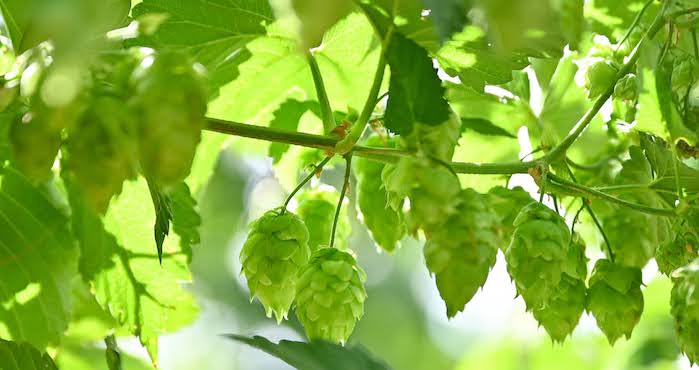Hop Science Newsletter (April 2019)
In this issue: insights in thiols, prenylated flavonoids, and the benefits of combining genetic and biochemical info on hop varieties.

MORE INSIGHTS IN THIOLS
These German Researchers invested a lot in establishing a method to hunt thiols in 26 different fruits and 20 different wines using a thiol selective isolation procedure in combination with three different detection methods. The developed method applying three methods of detection in combination with a database containing about 100 newly synthesized sulfur compounds and a total of about 300 compounds allowed for the characterization of mercaptans even when present in very low concentrations. In fruits and wines, an amount of about 0.5 μg/kg was detectable SCD (Sulfur-Chemiluminesence-Detection) and an amount of about 50 ng/kg (in the affinity chromatography extract) was detectable by MS. However, the most sensitive detector was the human olfactory system. Many of the newly identified thiols belong to fruits that we use as descriptors for different hop aromas e.g. pomelo, lemon peel, passion fruit. I would not be surprised if those compounds can also be found in different hop varieties. These authors demonstrated that it is still possible to find new thiols by applying the approach developed. However the characterization of such new trace odorants is only possible by application of different detection methods, with the human olfactory system as the most important. For a structural assignment of new compounds, always reference compounds are needed. Thus, more structure/activity studies should be performed to fill the database with analytical data of more compounds with high odour potency.¹
GIVE ME MORE PRENYLATED FLAVONOIDS!
Prenylated flavonoids are of high value in a health context, one of them being 8-prenylnaringenin,
however the occurrence in different plants (as hops) is very low. And to increase the yield of those
components by extraction and enrichment processes is extremely expensive. These Dutch Researchers looked into the possibility to use yeast for an increased production of these components. They successfully show de novo production of 8-prenylnaringenin in S. cerevisiae. The yeast produced up to 0.12 mg L−1 (0.35 μM) 8-prenylnaringenin under shake flask conditions. At the same time, a number of bottlenecks were identified, in particular with regard to the efficiency of prenylation. Engineering these bottlenecks will require tuning the balance between ergosterol formation and availability of DMAPP (Dimethylallyl diphosphate) as a donor for the prenyltransferase. Higher yields are expected from increasing the availability of the prenyl donor. The strains developed in this work represent
an important platform for future development of economical production of 8-prenylnaringenin and
potentially other relevant prenylated flavonoids, such as xanthohumol. We always knew that hops and yeast are good partners!²
THE BENEFITS OF COMBINING GENETIC AND BIOCHEMICAL INFO ON HOP VARIETIES
Hops are always challenging brewers when it comes to a consistent aroma and flavour profile. We know that hop batches of the same variety cultivated in different geographical regions can display significant biochemical differences, resulting in specific taste- and aromarelated characteristics in beer. In this study, these Belgium Researchers illustrate the complementarity of genetic and biochemical fingerprinting methods to fully characterize hop batches. Using genotyping-bysequencing
(GBS), a set of 1 830 polymorphic single nucleotide polymorphism (SNP) markers generated 48 unique genetic fingerprints for a collection of 56 commercial hop varieties. Three groups of varieties,
consisting of somaclonal variants, could not be further differentiated using this set of markers. Biochemical marker information offered added value to characterize hop samples of varieties grown in different cultivation regions. Such samples cannot be distinguished using genetic markers, whereas the contents of hop bitter acids and hop essential oils, and especially the composition of the hop oils, are very valuable to differentiate samples of a given hop variety from distinct cultivation areas. SNP markers can thus be used for authenticity control of hop batches toward varietal origin, while supplementary biochemical characterization is advisable when a consistent aroma profile is sought.3
EVENTS: Outlook Hops Academy
July 2/3: From field to beer – at the Barth Haas Campus Nuremberg. This program covers a comprehensive overview about what there is to know about hops, from cultivation to harvest, about the Flavour differences between varieties, the hop market and what we do for our customers to fulfill the highest quality requirements for hops. Language: English.
July 9th: Expert Hop Selection: Receive an inspirational in-depth look into the world of hop assessment.
With selected tools, practical examples and sound aroma training, you are well-equipped to be able to assess hops. Register here: https://www.barthhaasgroup.com/de/hops-academy#termine
REFERENCES



